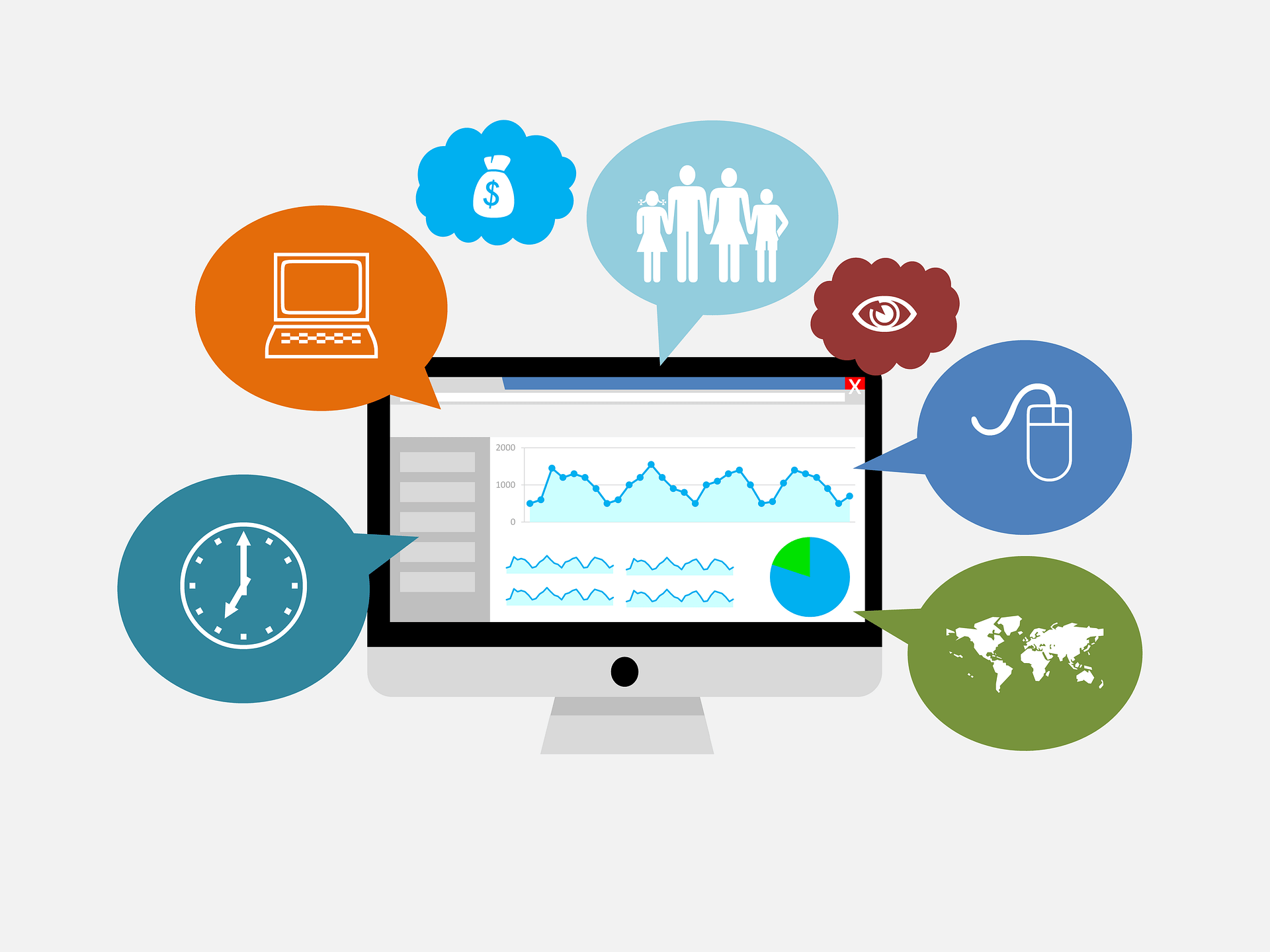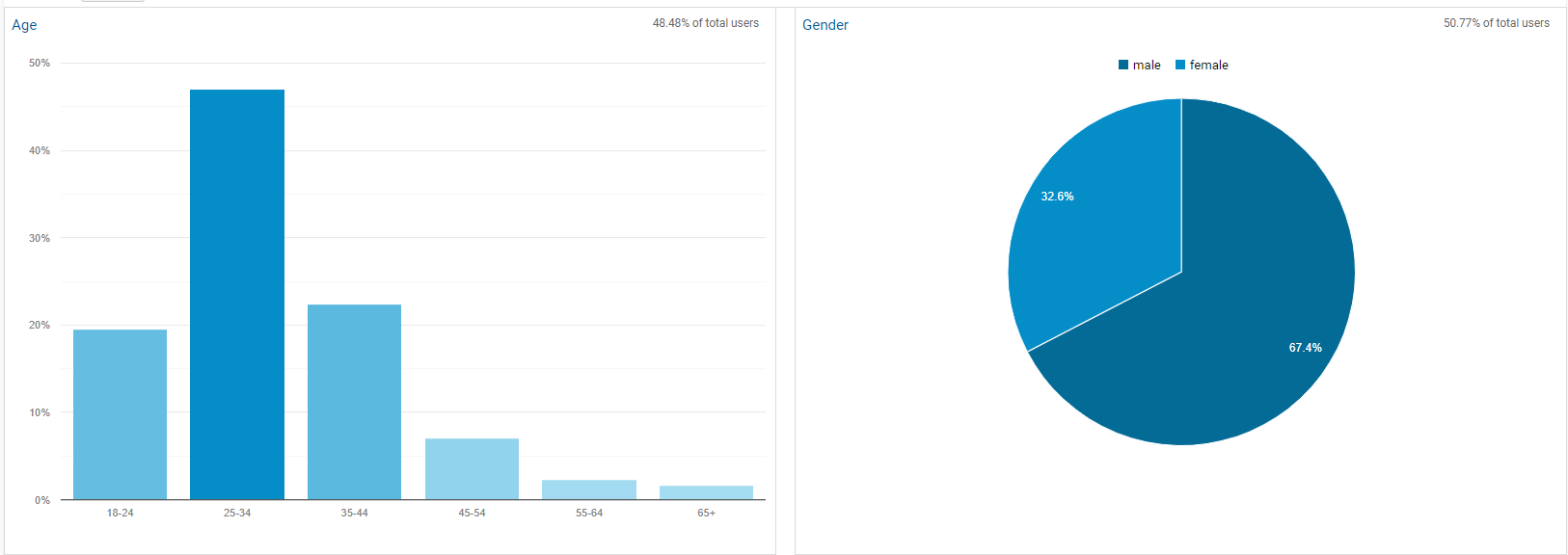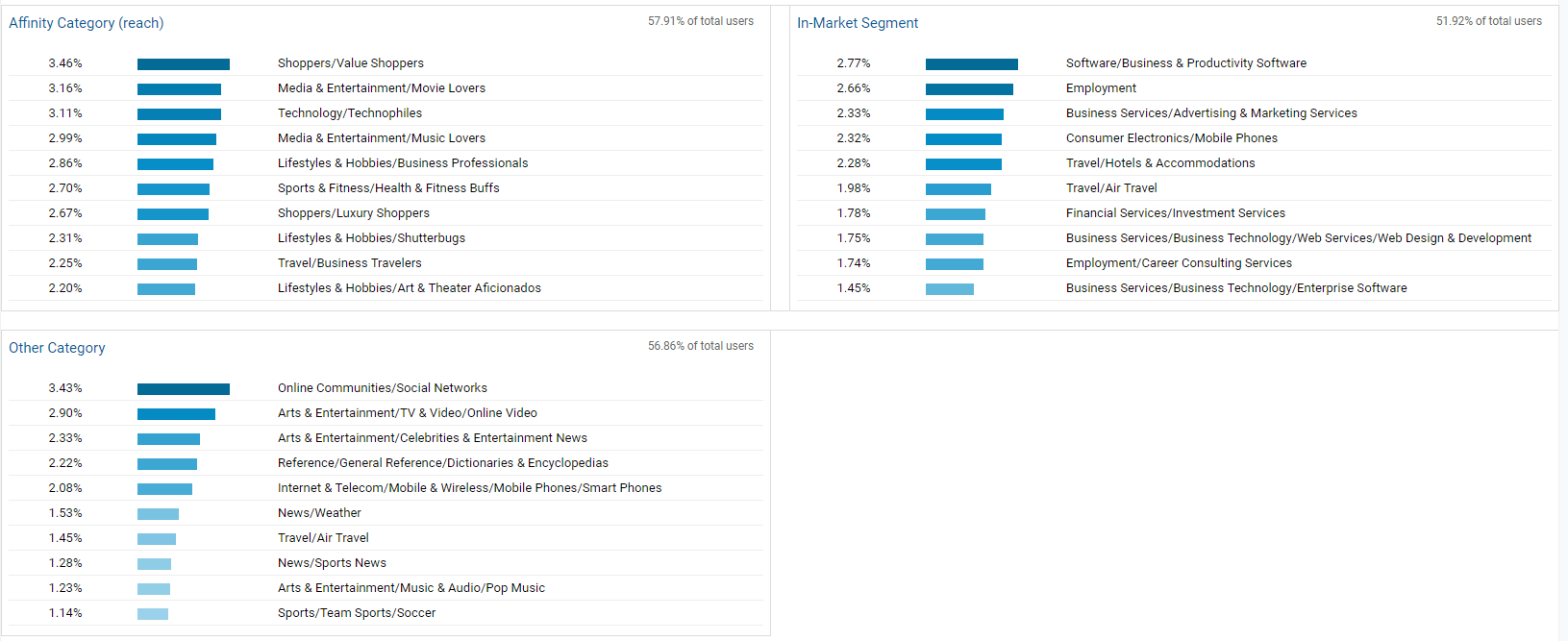
March 21, 2019 | InBrief
Make Your Personas More Powerful by Leveraging Audience Reports in Google Analytics
Make Your Personas More Powerful by Leveraging Audience Reports in Google Analytics
An important component to creating these personas is customer research. I’ll walk you through the easy ways you can use Google Analytics – specifically the Audience Reports – to support the creation of your customer personas.
What is Google Analytics?
Google Analytics is a web analytics platform offered by Google that helps businesses track and report website analytics, such as average time a visitor spends on a page, how many visitors come to your website every hour, day, month, week, or year, and other data points specific to website visitors. If you do not currently have Google Analytics installed on your website, here is a step-by-step guide on getting started with Google Analytics. If you’re already familiar with Google Analytics and the basic website tracking information it provides, I would like to explain how you can take this information a step further and use it to create and/or improve your personas. (Note: the screenshots included in this post are from a Google Analytics Demo Account using data from the "Google Merchandise Store.")
How can Google Analytics help support persona development?
Within Google Analytics, there is a specific reporting category titled “Audience.” Within this category there are several sections that help users further understand website visitors to inform persona creation. Instead of assuming the average age, location, or gender breakdown of your customers and/or website visitors, use Google Analytics to extract this information. The Audience section includes some powerful reports, including:
Demographics
This section will help you understand things like the age and gender breakdown of your website visitors. When defining or updating personas, the demographic section can help you set the basic demographic information of your customers. I recently worked on an engagement with a client and we utilized this information to lay the initial foundation for our personas.
Here is an example: Danny the Digital Native – male; approx. 25-34 years of age.
Interests
The Interests report in Google Analytics can help you better understand the products and services your customers are interested in. Google Analytics determines interests by collecting and analyzing browsing behavior, app usage, and even video plays in YouTube. This supports the persona by including more background on what your persona is interested in and where they spend their time on the internet. In the “Danny the Digital Native” persona example, we determined that his persona was interested in technology and sports and we used this information to provide more context to the persona and help bring Danny “to life.”
Geo
Understand the location of your website visitors/customers by using Google Analytics’ Location report. Understand which country, and even city, your customers live in. In this report, you can view the country, region, and the exact city of your website traffic. The Geo report can also help you understand the language spoken by those visiting your website. If you are an organization that is interested in segmenting personas by a specific location, this will help you understand the breakdown of your website visitors. In the “Danny the Digital Native” persona example, we were able to understand that a majority of visitors that fell into that person were located in major metropolitan areas across the United States.
Technology (and Mobile)
Understand the browser and operating systems your customers use when they access your website. This section is extremely valuable to organizations that are looking to leverage personas for technology development. Important things to understand here include the breakdown of browser (and version) used by visitors, the device category (desktop/mobile/tablet) used by visitors, and the exact type of device. If your organization understands how your visitors access your site, you can determine the priority of how you might design, build, and test functionality. For instance, if we know most users visit using a certain device, browser, and/or resolution, we can design for that and ensure the user experience aligns with insights from Google Analytics. In the "Danny the Digital Native" persona example, we determined that persona spent a majority of their time on our client’s website using their mobile device, and very rarely visited via a desktop or tablet device.
A question we sometimes get from clients is “How does Google Analytics know the gender, interests, etc. of my website visitors?” This is a very good question. When a user is logged into their Google account and visits a website, Google captures that data and behavior and uses it to populate these Audience reports. Also, by adding personal information to a Google account (gender, birthday, location) users are offering that information to Google, and Google Analytics is in turn providing those details to Google Analytics users.
Google Analytics is a very helpful tool for marketers and customer experience professionals alike. I have used information like this in the past to help organizations understand how – and where – to prioritize their marketing initiatives. Using this information as an addition to your current personas can help your organization more clearly understand how and where to engage with your current and/or prospective customers.
Below I have included some helpful links that will answer any additional questions and help you get started with Google Analytics – specifically the Audience reports – today. Please feel free to ask questions or challenges you are experiencing in the comments section below!







